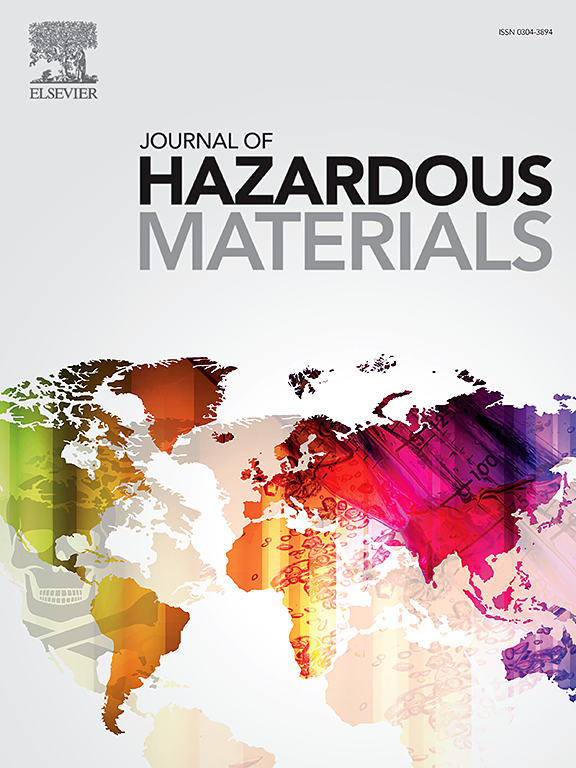Nitrogen-phosphorus stoichiometry and Cladophora growth affected by grass-sourced dissolved organic matter in the littoral zone of the Qinghai Lake, China
IF 12.2
1区 环境科学与生态学
Q1 ENGINEERING, ENVIRONMENTAL
引用次数: 0
Abstract
Climate-driven lake expansion on the Qinghai-Tibet Plateau has triggered the extensive release of organic compounds through inundation-induced vegetation decomposition. This process generates substantial dissolved organic matter (DOM), potentially threatening alpine aquatic systems. In this work, the effects of grass-sourced DOM inputs on the nitrogen-to-phosphorus (N/P) ratio and Cladophora growth were studied. Field observation conducted in the lakeshore zone of Qinghai Lake showed that water column N/P ratios were closely related to Cladophora chlorophyll a (Chl.a) content. Microcosm experiment indicated that grass decomposition released DOM dominated by humic and fulvic acids. This DOM input enhanced sediment phosphorus (P) release and denitrification activity, reducing the dissolved inorganic nitrogen-to-soluble reactive phosphorus (DIN/SRP) ratio in pore water. The altered overlying water stoichiometry further affected Cladophora growth. High-throughput sequencing showed that grass-sourced DOM significantly altered sediment microbial community composition. Notably, the relative abundance of denitrifying and phosphate-solubilizing bacteria, such as Acinetobacter and Pseudomonas exhibited a remarkable increase. Furthermore, a more complex co-occurrence network between DOM-degrading microbes was observed. Easily biodegradable DOM fractions, particularly tryptophan-like (P2), fulvic acid-like (P3), and microbial by-products (P4), were closely associated with an increased abundance of denitrifying and phosphate-solubilizing bacteria. Herein, we investigated the DOM-driven ecological cascade effects of N/P ratio changes, microbial community succession, and algal proliferation, which could provide critical insights for assessing emerging environmental hazards in vulnerable high-altitude aquatic ecosystems under global change scenarios.

青海湖湖滨带氮磷化学计量特征及草源溶解有机质对Cladophora生长的影响
青藏高原气候驱动的湖泊扩张,通过淹没引起的植被分解,引发了有机化合物的大量释放。这一过程会产生大量溶解有机物(DOM),对高山水生系统构成潜在威胁。本研究主要研究了不同来源的DOM对氮磷比和Cladophora生长的影响。在青海湖湖滨带进行的野外观测表明,水体氮磷比与Cladophora叶绿素a含量密切相关。微观实验表明,禾草分解释放的DOM以腐植酸和黄腐酸为主。DOM的输入增强了沉积物磷(P)的释放和反硝化活性,降低了孔隙水中溶解的无机氮与可溶性活性磷(DIN/SRP)的比例。水体化学计量的改变进一步影响了海苔的生长。高通量测序结果显示,草源DOM显著改变了沉积物微生物群落组成。值得注意的是,不动杆菌和假单胞菌等反硝化和磷酸盐溶解菌的相对丰度显著增加。此外,dom降解微生物之间存在更复杂的共生网络。易于生物降解的DOM组分,特别是色氨酸样(P2)、黄腐酸样(P3)和微生物副产物(P4),与反硝化和磷酸盐溶解细菌丰度的增加密切相关。在此,我们研究了dom驱动的N/P比变化、微生物群落演替和藻类增殖的生态级联效应,为评估全球变化情景下脆弱的高海拔水生生态系统的新环境危害提供了重要见解。
本文章由计算机程序翻译,如有差异,请以英文原文为准。
求助全文
约1分钟内获得全文
求助全文
来源期刊

Journal of Hazardous Materials
工程技术-工程:环境
CiteScore
25.40
自引率
5.90%
发文量
3059
审稿时长
58 days
期刊介绍:
The Journal of Hazardous Materials serves as a global platform for promoting cutting-edge research in the field of Environmental Science and Engineering. Our publication features a wide range of articles, including full-length research papers, review articles, and perspectives, with the aim of enhancing our understanding of the dangers and risks associated with various materials concerning public health and the environment. It is important to note that the term "environmental contaminants" refers specifically to substances that pose hazardous effects through contamination, while excluding those that do not have such impacts on the environment or human health. Moreover, we emphasize the distinction between wastes and hazardous materials in order to provide further clarity on the scope of the journal. We have a keen interest in exploring specific compounds and microbial agents that have adverse effects on the environment.
 求助内容:
求助内容: 应助结果提醒方式:
应助结果提醒方式:


